Airborne Wind Energy
Implemented concepts
Roland Schmehl
19 September 2025
Outline
- Classification
- SkySails
- TU Delft
- Kitepower
- Kitenergy
- Toyota
- CPECC
- Wind Fisher
- EnerKíte
- Ampyx Power
- Mozaero
- Kitemill
- TwingTec
- Windswept
- someAWE
- Windlift
- kiteKRAFT
Learning objectives
- Learn about the different implemented concepts and their working principles,
- Classify the implemented concepts according to various criteria,
- Discuss a representative set of prototypes in more detail.
Classification
AWE systems can be classified in many different ways.
- Energy conversion concept
- Kite design
- Launching and landing concept
- Kite control
- Rated power
- …
Classification criteria are generally correlated.
Criterion 1: Energy conversion location
Lorenzo Fagiano | Dylan Eijkelhof
Criterion 2: Kite type
Antonello Cherubini
Criterion 3: Launching and landing concept
Enerkíte
Currently developed commercial prototypes
The classification is based on 14 currently developed commercial prototypes
Several other implemented prototypes, not pursued commercially anymore, are included in the subsequent discussion
| Developer | Prototype name | Electricity generation location | Kite type | Launching & landing concept | Wing span (m) | Wing surface area (m2) | Kite mass (kg) | Min.–max. operation height (m) | Rated power (kW) |
|---|---|---|---|---|---|---|---|---|---|
| SkySails | SKN-PN-14 | ground | soft wing | static mast | 15.6–22a | 90b, 180c | 170d | 200-400 | 200 |
a projected wing span
b projected wing surface area
c flat (laid-out) wing surface area
| Developer | Prototype name | Electricity generation location | Kite type | Launching & landing concept | Wing span (m) | Wing surface area (m2) | Kite mass (kg) | Min.–max. operation height (m) | Rated power (kW) |
|---|---|---|---|---|---|---|---|---|---|
| Kitepower | Falcon | ground | soft wing | winch | 13.3a | 47b, 60c | 73d | 70-400 | 100 |
a projected wing span
b projected wing surface area
c flat (laid-out) wing surface area
| Developer | Prototype name | Electricity generation location | Kite type | Launching & landing concept | Wing span (m) | Wing surface area (m2) | Kite mass (kg) | Min.–max. operation height (m) | Rated power (kW) |
|---|---|---|---|---|---|---|---|---|---|
| Kitenergy | KE60 Mark II | ground | soft wing | winch | 12.5a | 42b, 50c | 100-400 | 60 |
a projected wing span
b projected wing surface area
c flat (laid-out) wing surface area
| Developer | Prototype name | Electricity generation location | Kite type | Launching & landing concept | Wing span (m) | Wing surface area (m2) | Kite mass (kg) | Min.–max. operation height (m) | Rated power (kW) |
|---|---|---|---|---|---|---|---|---|---|
| Toyota | Mothership v11 | ground | soft wing | winch | 8 | 8 | 5.2 | 300-600 | 1 |
| Developer | Prototype name | Electricity generation location | Kite type | Launching & landing concept | Wing span (m) | Wing surface area (m2) | Kite mass (kg) | Min.–max. operation height (m) | Rated power (kW) |
|---|---|---|---|---|---|---|---|---|---|
| CPECC | Airpower | ground | parachute | pilot parachute | 40a | 1256b | 1480 | 500-3000 | 2400e |
a projected parachute diameter
b projected parachute surface area
e rated generator power
| Developer | Prototype name | Electricity generation location | Kite type | Launching & landing concept | Wing span (m) | Wing surface area (m2) | Kite mass (kg) | Min.–max. operation height (m) | Rated power (kW) |
|---|---|---|---|---|---|---|---|---|---|
| Wind Fisher | MAG1 | ground | Magnus rotor | winch | 1.7 | 0.32f | 1.0 | 0-50 | 0 |
f rotor diameter × width
| Developer | Prototype name | Electricity generation location | Kite type | Launching & landing concept | Wing span (m) | Wing surface area (m2) | Kite mass (kg) | Min.–max. operation height (m) | Rated power (kW) |
|---|---|---|---|---|---|---|---|---|---|
| EnerKíte | EK30/Enerwing | ground | hybrid wing | HTOL rotating arm | 8-14 | 4-8 | 22.7 | 50-300 | 30 |
| Developer | Prototype name | Electricity generation location | Kite type | Launching & landing concept | Wing span (m) | Wing surface area (m2) | Kite mass (kg) | Min.–max. operation height (m) | Rated power (kW) |
|---|---|---|---|---|---|---|---|---|---|
| Mozaerog | AP3 | ground | hard wing | HTOL catapult | 12 | 12 | 475 | 200-450 | 150 |
g formerly Ampyx Power
| Developer | Prototype name | Electricity generation location | Kite type | Launching & landing concept | Wing span (m) | Wing surface area (m2) | Kite mass (kg) | Min.–max. operation height (m) | Rated power (kW) |
|---|---|---|---|---|---|---|---|---|---|
| Kitemill | KM1 | ground | hard wing | VTOL quad-plane | 7.4 | 3 | 54 | 200-500 | 20 |
| Developer | Prototype name | Electricity generation location | Kite type | Launching & landing concept | Wing span (m) | Wing surface area (m2) | Kite mass (kg) | Min.–max. operation height (m) | Rated power (kW) |
|---|---|---|---|---|---|---|---|---|---|
| TwingTec | Twing (T29) | ground | hard wing | VTOL tri-plane | 5.5 | 2 | 25 | up to 300 | 10 |
| Developer | Prototype name | Electricity generation location | Kite type | Launching & landing concept | Wing span (m) | Wing surface area (m2) | Kite mass (kg) | Min.–max. operation height (m) | Rated power (kW) |
|---|---|---|---|---|---|---|---|---|---|
| Windswept | Kite Turbine | ground | rotary | pilot kite | 6×1h | 6×0.2 | 10 | 1 |
h rotor diameter 4.48 m
| Developer | Prototype name | Electricity generation location | Kite type | Launching & landing concept | Wing span (m) | Wing surface area (m2) | Kite mass (kg) | Min.–max. operation height (m) | Rated power (kW) |
|---|---|---|---|---|---|---|---|---|---|
| someAWE | MAR3 | ground | rotary | pilot kite | 4×1i | 4×0.15 | 0.5 |
i rotor diameter 3.5 m
| Developer | Prototype name | Electricity generation location | Kite type | Launching & landing concept | Wing span (m) | Wing surface area (m2) | Kite mass (kg) | Min.–max. operation height (m) | Rated power (kW) |
|---|---|---|---|---|---|---|---|---|---|
| Kitekraft | SN9 | onboard | box wing | VTOL tailsitter | 2.4 | 1.08 | 32 | 100j | 12 |
j tether length
| Developer | Prototype name | Electricity generation location | Kite type | Launching & landing concept | Wing span (m) | Wing surface area (m2) | Kite mass (kg) | Min.–max. operation height (m) | Rated power (kW) |
|---|---|---|---|---|---|---|---|---|---|
| Windlift | C1 | onboard | hard wing | VTOL tailsitter | 3.8 | 0.95 | 11.3 | 30-100 | 2 |
Applying classification criteria 1-3
| Developer | Prototype name | Electricity generation location | Kite type | Launching & landing concept | Wing span (m) | Wing surface area (m2) | Kite mass (kg) | Min.–max. operation height (m) | Rated power (kW) |
|---|---|---|---|---|---|---|---|---|---|
| SkySails | SKN-PN-14 | ground | soft wing | static mast | 15.6–22a | 90b, 180c | 170d | 200-400 | 200 |
| Kitepower | Falcon | ground | soft wing | winch | 13.3a | 47b, 60c | 73d | 70-400 | 100 |
| Kitenergy | KE60 Mark II | ground | soft wing | winch | 12.5a | 42b, 50c | 100-400 | 60 | |
| Toyota | Mothership v11 | ground | soft wing | winch | 8 | 8 | 5.2 | 300-600 | 1 |
| CPECC | Airpower | ground | parachute | pilot parachute | 40a | 1256b | 1480 | 500-3000 | 2400e |
| Wind Fisher | MAG1 | ground | Magnus rotor | winch | 1.7 | 0.32f | 1.0 | 0-50 | 0 |
| EnerKíte | EK30/Enerwing | ground | hybrid wing | HTOL rotating arm | 8-14 | 4-8 | 22.7 | 50-300 | 30 |
| Mozaerog | AP3 | ground | hard wing | HTOL catapult | 12 | 12 | 475 | 200-450 | 150 |
| Kitemill | KM1 | ground | hard wing | VTOL quad-plane | 7.4 | 3 | 54 | 200-500 | 20 |
| TwingTec | Twing (T29) | ground | hard wing | VTOL tri-plane | 5.5 | 2 | 25 | up to 300 | 10 |
| Windswept | Kite Turbine | ground | rotary | pilot kite | 6×1h | 6×0.2 | 10 | 1 | |
| someAWE | MAR3 | ground | rotary | pilot kite | 4×1i | 4×0.15 | 0.5 | ||
| Kitekraft | SN9 | onboard | box wing | VTOL tailsitter | 2.4 | 1.08 | 32 | 100j | 12 |
| Windlift | C1 | onboard | hard wing | VTOL tailsitter | 3.8 | 0.95 | 11.3 | 30-100 | 2 |
a projected wing span
b projected wing surface area
c flat (laid-out) wing surface area
d excluding tether, but including suspended kite control unit
and bridle line system
e rated generator power
f rotor diameter × width
g formerly Ampyx Power
h rotor diameter 4.48 m
i rotor diameter 3.5 m
j tether length
Classification scheme
AWE in 2025
AWE test sites
SkySails
| Years active | 2001- |
| Headquarters | Hamburg, Germany |
| Type | Company |
| Conversion concept | Pumping cycle |
| Kite design | Ram air kite |
| Kite control | Suspended kite control unit |
| Ground connection | Single tether |
| Launching & landing | Static, from mast |
SkySails SKN-PN-14
SkySails’ system in launch configuration
SkySails
SkySails SKN-PN-14
SkySails’ system in airborne parking position
SkySails
SkySails demo flight
SkySails roll control
Paulig et al. (2013)
Power Curve SKN-PN-14
Released March 22th 2024
TU Delft
| Years active | 2004- |
| Headquarters | Delft, Netherlands |
| Type | University research group |
| Conversion concept | Pumping cycle |
| Kite design | Leading edge inflatable tube kite |
| Kite control | Suspended kite control unit |
| Ground connection | Single tether |
| Launching & landing | Winch & upswing from hanging position |
System components
Vlugt et al. (2019)
Pumping kite concept
Vlugt et al. (2013)
Dynamic Simulation
Fechner et al. (2015)
Pumping cycle operation - simulation
Fechner (2016)
Power curve - simulation
Fechner (2016) p. 166 & 181
V3 kite
Oehler and Schmehl (2019)
Control bridle layout in flight
Left actuation loopRight actuation loop
Max Dereta
Kite control unit
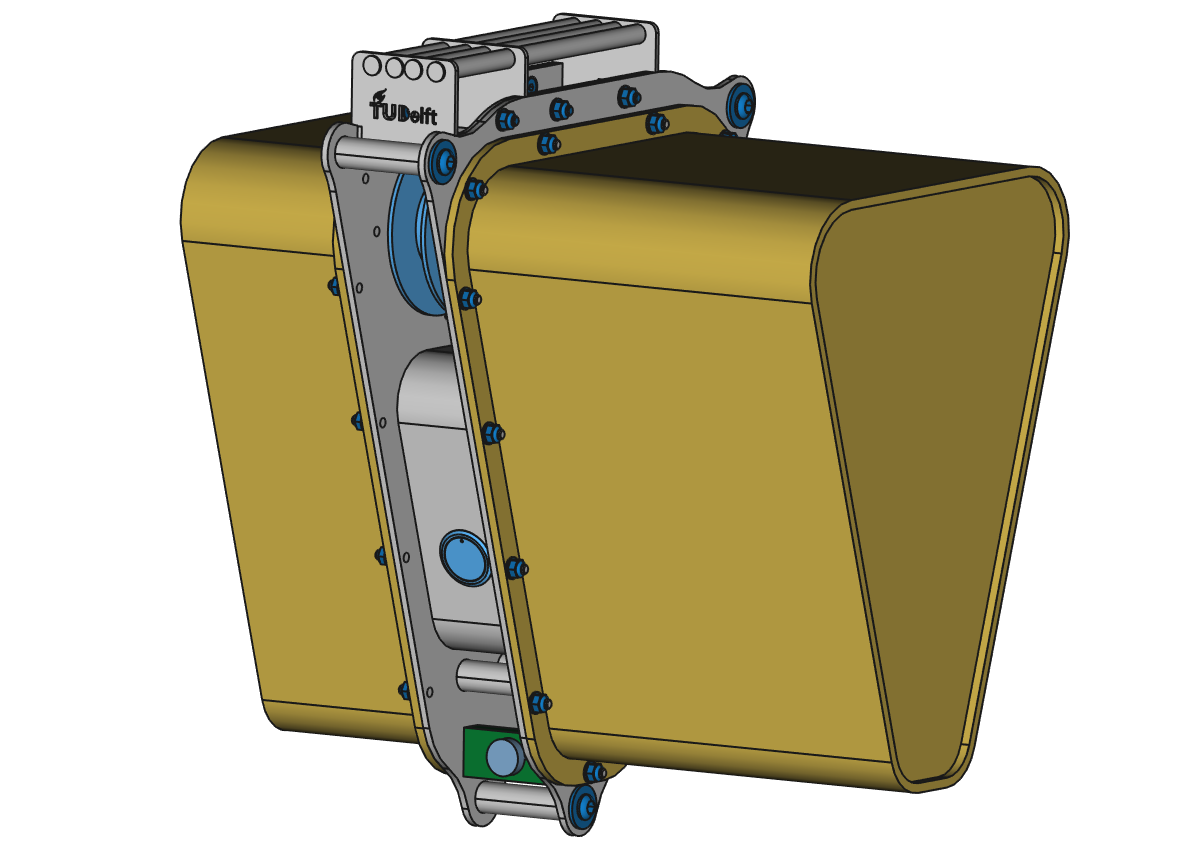
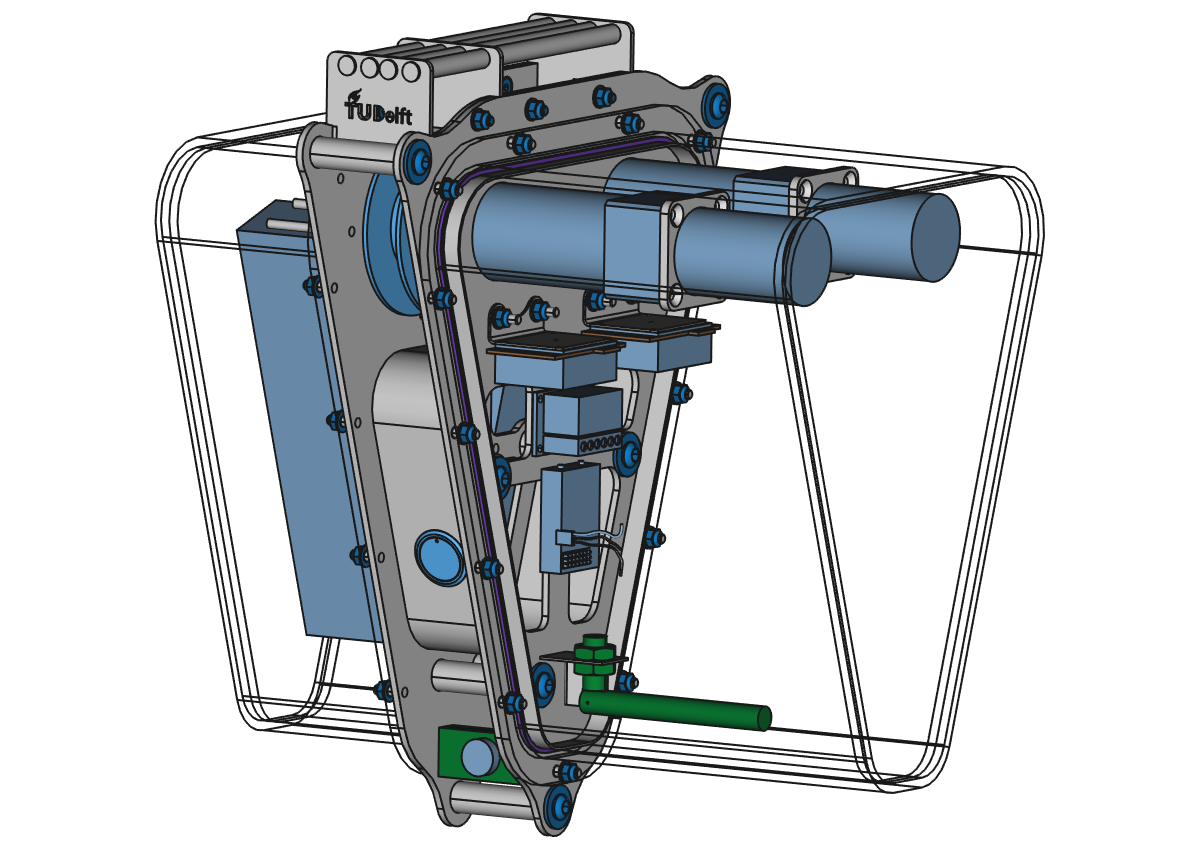
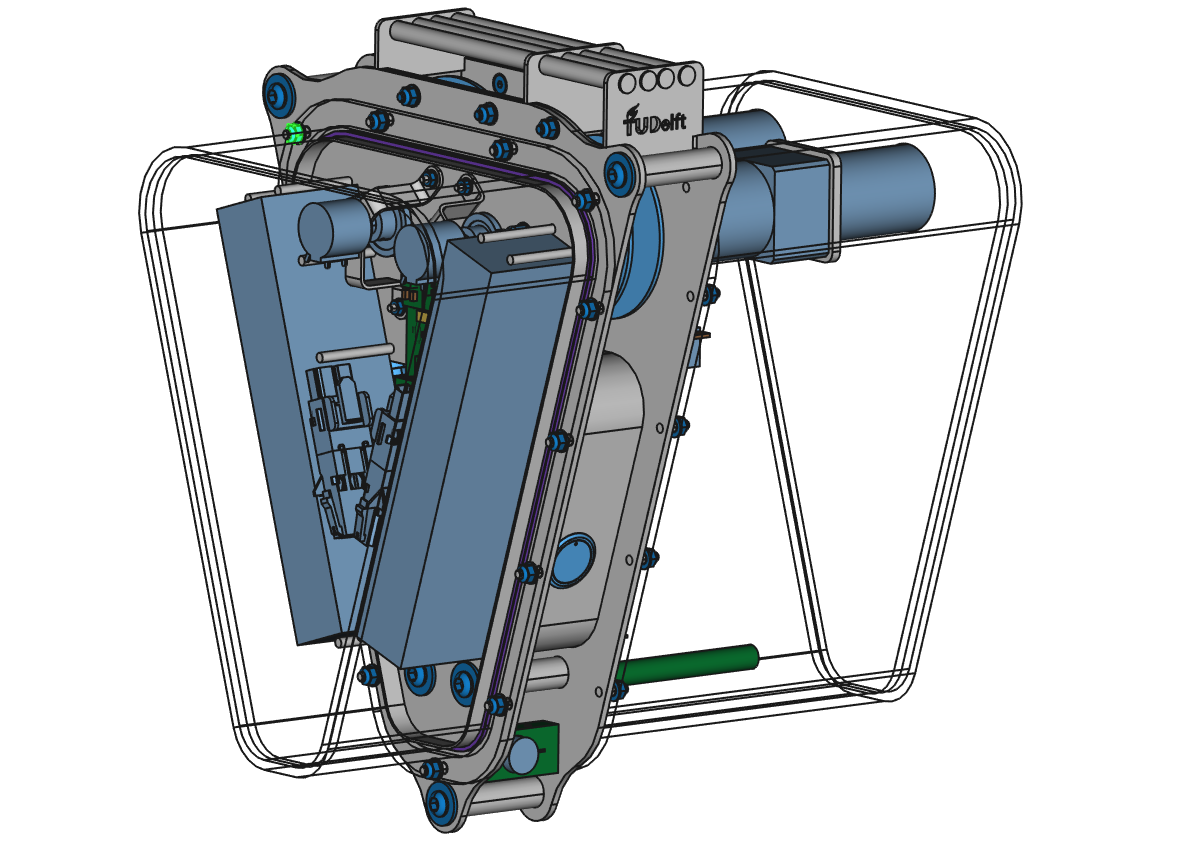
Features:
Shock- and
water-proof casing (shown without extra foam padding)
Two separate micro
winches for depowering and steering
Depower winch
includes piston brake
Onboard computer and
wifi antenna
Rechargeable
batteries for >2h flight
Angular encoders to
measure tape actuations
V3 kite bridle line system
Poland and Schmehl (2023)
V3 kite control
V3 kite control during launching and landing
End point of depower tape is marked.
Powered
Depowered
Depowered & steering
Oehler and Schmehl (2019)
Mast-based launching and landing
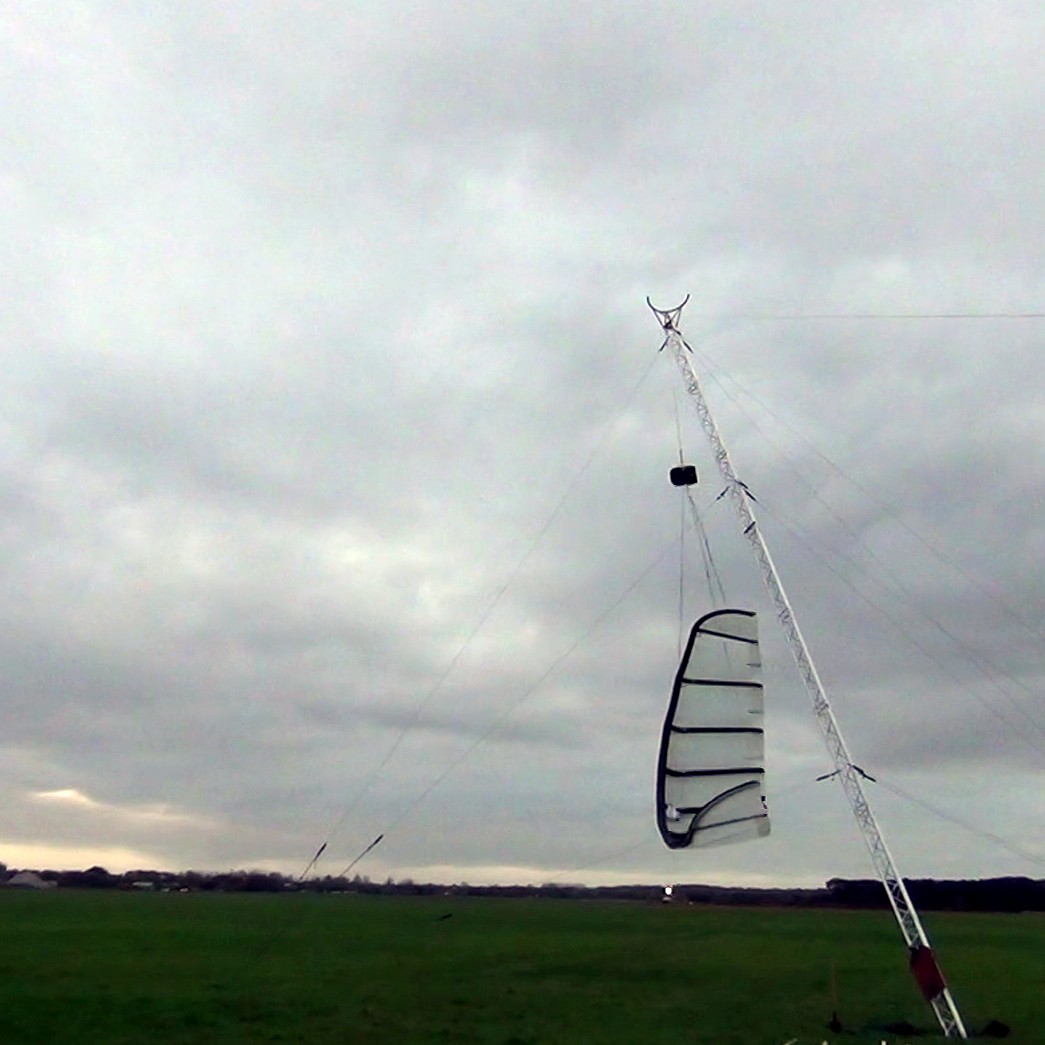
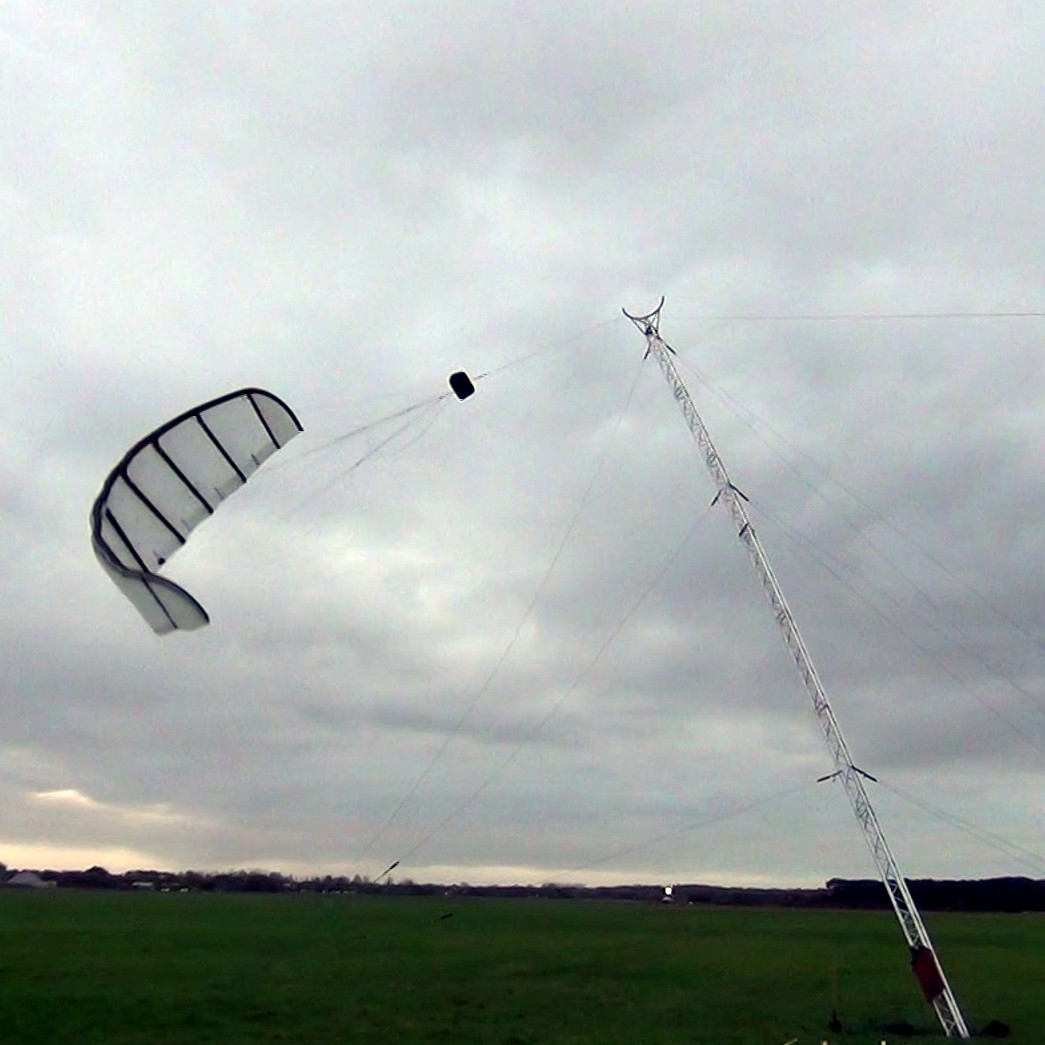

TU Delft V3 kite on 25 October 2012.
Pulley mechanism
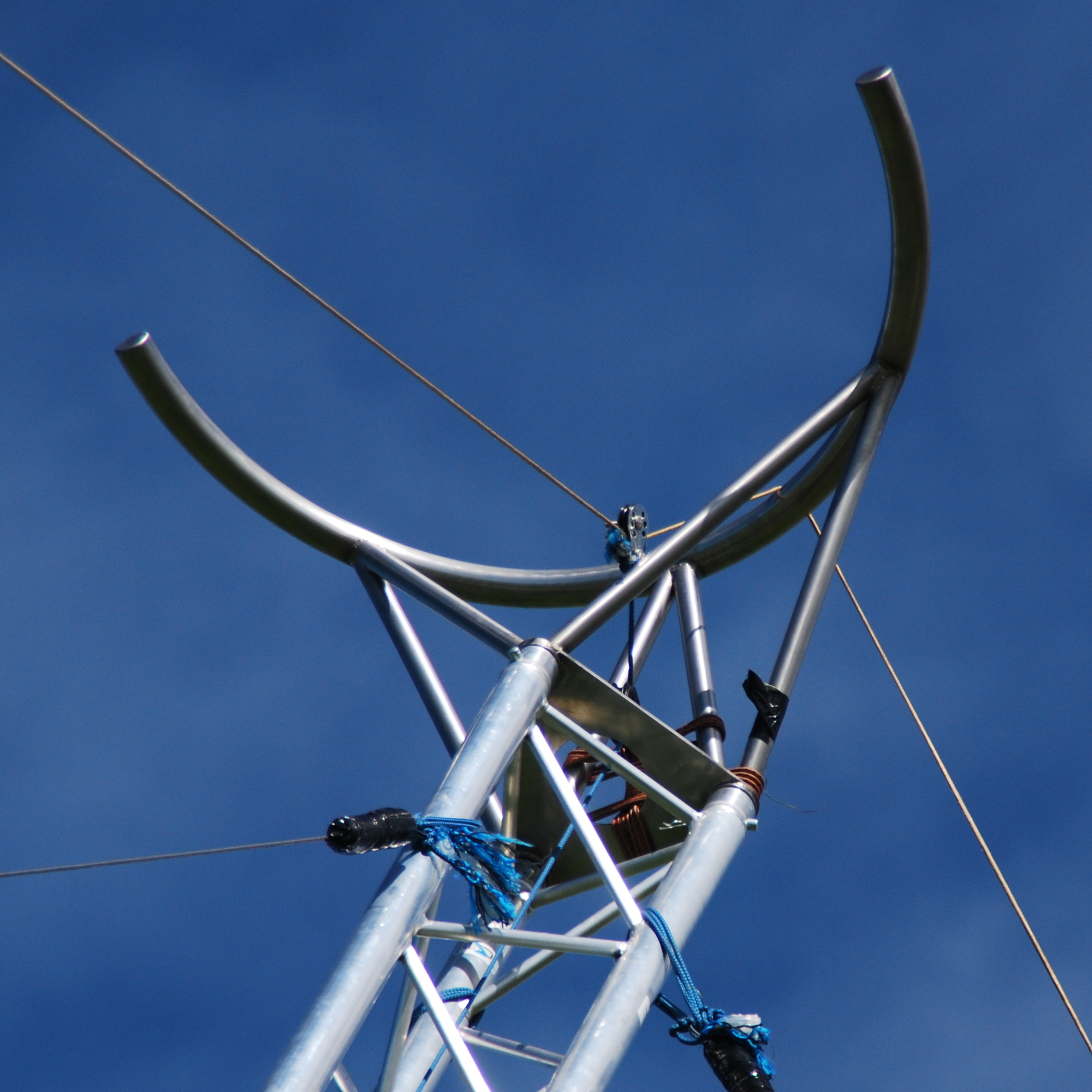
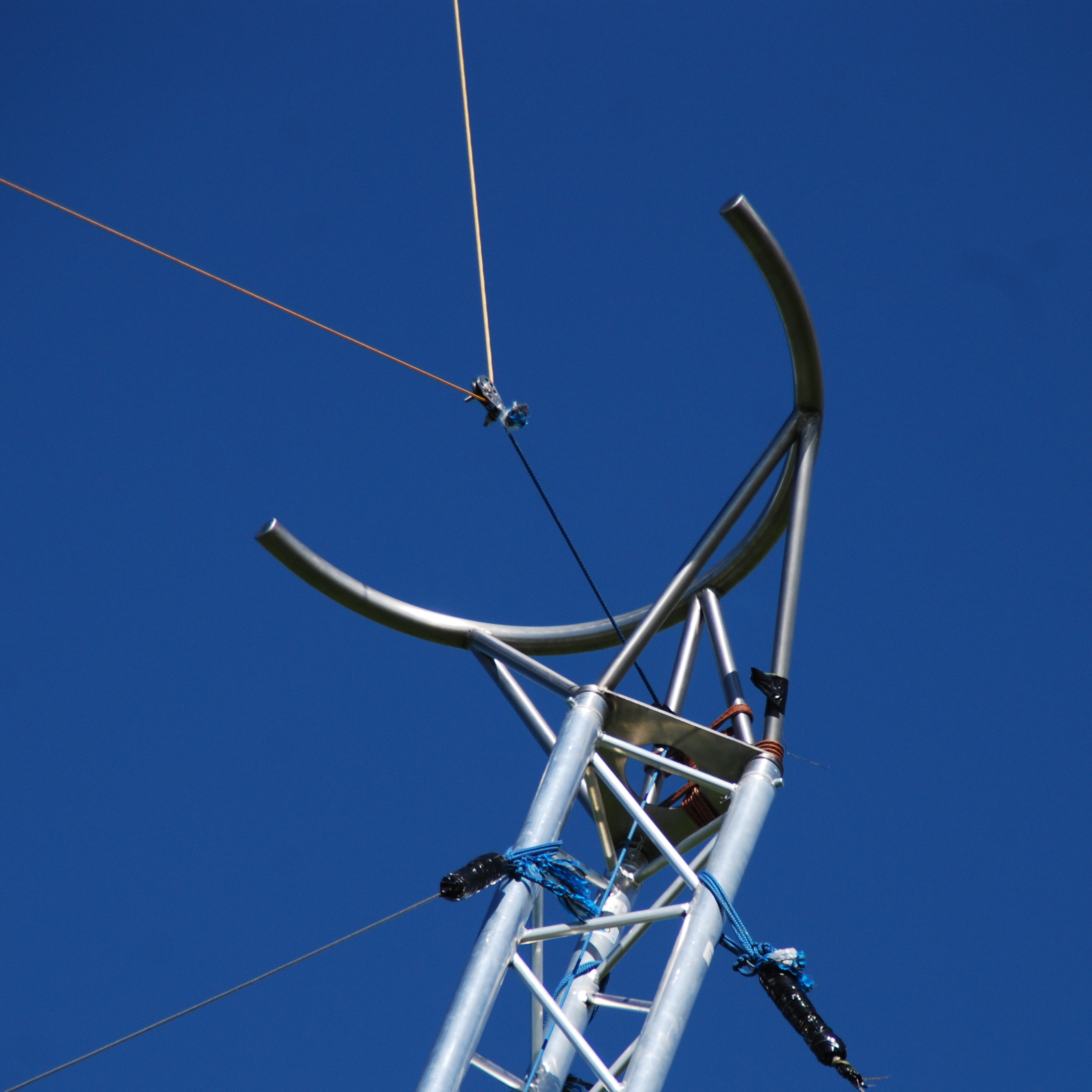

Pulley mechanism to retain the tether at the circular rail (left), gradual release of the retaining pulley (center and right)
V3 kite launching and landing
doi:10.5446/48640, doi:10.5446/48647
Ground station
Tether path
Kitepower
| Years active | 2015- |
| Headquarters | Delft, Netherlands |
| Type | Registered trademark of TU Delft spin-off company Enevate B.V. |
| Conversion concept | Pumping cycle |
| Kite design | Leading edge inflatable tube kite |
| Kite control | Suspended kite control unit |
| Ground connection | Single tether |
| Launching & landing | Winch, upswing from hanging position |
Daytime
Courtesy of Kitepower B.V. (2018)
Nighttime
Courtesy of Kitepower B.V. (2018)
Kitepower on Aruba (2021)
Kitepower on Aruba (2021)
System operation
System operation
Courtesy of Kitepower B.V. (2019)
System operation
Courtesy of Kitepower B.V. (2019)
Operational zones
Salma et al. (2019)
Kite park layout
Faggiani and Schmehl (2018)
Kite park power output
Faggiani and Schmehl (2018)
Ground station
Diehl et al. (2017)
Onboard wind turbine
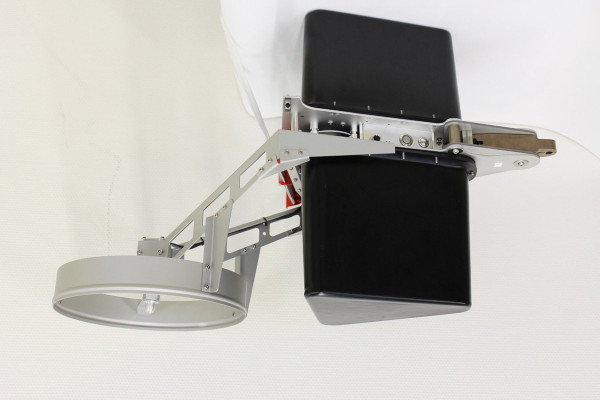
Diehl et al. (2017)
Onboard wind turbine
Zeeland, May 2021
Demo event May 2021, Melissant, the Netherlands (courtesy of Kitepower BV)
Fagiano et al. (2022)
Aruba, October 2021
Operation of the 100 kW system on Aruba in an exercise with the Dutch engineering corps.
Fagiano et al. (2022)
Offgrid charging
Dirksland, July 2023
Walter Hueber
Measuring audio footprint
Dirksland, July 2023
Kitepower
RWE’s AWE test center at Bangor Erris
Transporting the kite
Paul Faith, AFP
Transporting the kite at Bangor Erris.
Deploying the kite
Paul Faith, AFP
Deploying the kite at Bangor Erris.
Deploying the kite
Kitenergy
| Years active | 2010- |
| Headquarters | Turin, Italy |
| Type | Company |
| Conversion concept | Pumping cycle |
| Kite design | Ram-air kite |
| Kite control | Multiple winches on ground station |
| Ground connection | Multiple tethers |
| Launching & landing | Winch |
KE60 Mark II
Toyota
| Years active | 2018- |
| Headquarters | Japan, USA |
| Type | Company |
| Conversion concept | Pumping cycle |
| Kite design | Leading edge inflatable kite |
| Kite control | Aerodynamic control surfaces |
| Ground connection | Single tether |
| Launching & landing | Winch |
Mothership v11
CPECC
| Years active | 2024- |
| Headquarters | Beijing, China |
| Type | Company |
| Conversion concept | Pumping cycle |
| Kite design | Parachute |
| Kite control | Power/depower mode |
| Ground connection | Single tether |
| Launching & landing | Pilot parachute |
Airpower
Parachute-based prototype during take-off.
Wind Fisher
| Years active | 2021- |
| Headquarters | Les Adrets, France |
| Type | Company |
| Conversion concept | Pumping cycle |
| Kite design | Magnus rotor |
| Kite control | Control tethers and cylinder rotation |
| Ground connection | Two tethers |
| Launching & landing | Winch |
MAG1 kite
MAG1 tow test
MAG1 control
View from kite to towing vehicle.
MAG15 prototype first autonomous flight
EnerKíte
| Years active | 2010- |
| Headquarters | Berlin, Germany |
| Type | Spin-off company of TU Berlin |
| Conversion concept | Pumping cycle |
| Kite design | Hybrid swept wing without fuselage |
| Kite control | Multiple winches on ground station |
| Ground connection | Three separate tethers & bridle line system |
| Launching & landing | Rotational HTOL with mast |
EnerKíte
Enerkite swept wing
Enerkite swept wing
Ampyx Power
| Years active | 2008-2022 (continued as Mozaero / Fuchszeug B.V.) |
| Headquarters | The Hague, Netherlands |
| Type | Spin-off company of TU Delft |
| Conversion concept | Pumping cycle |
| Kite design | Fixed wing with double fuselage & tailplane |
| Kite control | Aerodynamic control surfaces |
| Ground connection | Single tether |
| Launching & landing | Linear HTOL with catapult |
AP-1B1
Launch on 29 September 2012 (Schmehl 2015)
AP-2
AP-2
AP-2
AP-2
AP-2
AP-2
AP-2
AP-3
AP-3
Diehl et al. (2017)
AP-3
Two prototypes in the workshop in May 2021
AP-4
Comparison of a 2 MW AWE system with a HAWT
Kruijff and Ruiterkamp (2018)
AP-4 floating windpark
AP-4 floating windpark
Mozaero
| Years active | 2022- (continued from Ampyx Power B.V.) |
| Headquarters | Breda, Netherlands |
| Type | Project of Fuchszeug B.V. |
| Conversion concept | Pumping cycle |
| Kite design | Fixed wing with double fuselage & tailplane |
| Kite control | Aerodynamic control surfaces |
| Ground connection | Single tether |
| Launching & landing | Linear HTOL with catapult |
AP-3
Breda International Airport in May 2021
AP-3
Breda International Airport in May 2021
AP-3
Breda International Airport in May 2021
AP-3
Breda International Airport in May 2021
AP-3 untethered flight
Oostwold Airport in November 2023
AP-3 untethered flight
Oostwold Airport in November 2023
AP-3 untethered flight
Oostwold Airport in November 2023
Mozaero
Kitemill
| Years active | 2008- |
| Headquarters | Voss, Norway |
| Type | Company (absorbed E-Kite and KPS) |
| Conversion concept | Pumping cycle |
| Kite design | Fixed wing with single fuselage & tailplane |
| Kite control | Aerodynamic control surfaces |
| Ground connection | Single tether |
| Launching & landing | VTOL |
Kite producing up to 20 kW
Kitemill’s KM1 prototype during testing, Lista, Norway.
TwingTec
| Years active | 2013- |
| Headquarters | Dübendorf, Switzerland |
| Type | Spin-off company of EMPA |
| Conversion concept | Pumping cycle |
| Kite design | Fixed wing with single fuselage & tailplane |
| Kite control | Aerodynamic control surfaces |
| Ground connection | Single tether |
| Launching & landing | VTOL |
Comparison
TwingTec pilot next to wind turbine of comparable power (Schmehl and Tulloch 2019)
TwingTec
Windswept
| Years active | 2012- |
| Headquarters | Lerwick, Shetland, United Kingdom |
| Type | Company, affiliated to University of Strathclyde |
| Conversion concept | Tensile torque transfer to ground generator |
| Kite design | Rotating autogyro kite with fixed wings |
| Kite control | Yaw stall via lift bearing on rotor top-side |
| Ground connection | 5x networked rotary tethers & backline anchor |
| Launching & landing | Pilot kite and backline anchor |
Kite Turbine
Kite Turbine sideview
Windswept
someAWE
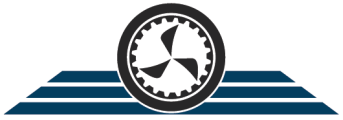
| Years active | 2017- |
| Headquarters | Alicante, Spain |
| Type | Company |
| Conversion concept | Tensile torque transfer to ground generator |
| Kite design | Rotating kite with fixed wings |
| Kite control | Passive with pilot kite or cyclic pitch control |
| Ground connection | Networked tethers |
| Launching & landing | Pilot kite |
MAR3
Windlift
| Years active | 2006- |
| Headquarters | Morrisville, NC, USA |
| Type | Company |
| Conversion concept | Onboard wind turbines |
| Kite design | Fixed wing with single fuselage & tailplane |
| Kite control | Aerodynamic control surfaces & onboard turbines |
| Ground connection | Single tether |
| Launching & landing | VTOL |
Windlift C1
Windlift C1
Windlift C1
Windlift video
Windlift vision
kiteKRAFT
| Years active | 2019- |
| Headquarters | Munich, Germany |
| Type | Spin-off company of TU Munich |
| Conversion concept | Onboard wind turbines |
| Kite design | Box wing with double fuselage & tailplane |
| Kite control | Aerodynamic control surfaces & onboard turbines |
| Ground connection | Single tether |
| Launching & landing | VTOL |
Kitekraft
Kitekraft
Wind tunnel
KK3Plus V1 for 5-15 kW, testing multi-element airfoils (Courtesy kiteKraft GmbH)
Fully automatic flight
Nighttime flight in 2024
Kitekraft’s flying wind turbine illuminated by the Anti-Collision-Lights.